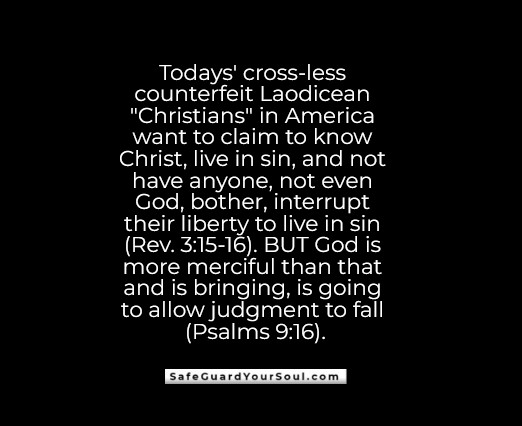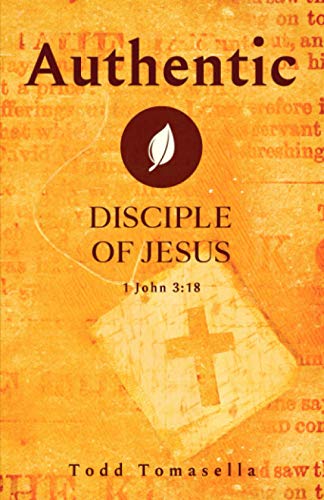by Will Kinney
JOHN 1:18
“No man hath seen God at any time; the only begotten Son, which is in the bosom of the Father, he hath declared him.” John 1:18
The Codex Vaticanus has μονογενὴς θεός (only begotten God) here in John 1:18 instead of the usual μονογενὴς υἱός (only begotten Son)
“No man hath seen God at any time; THE ONLY BEGOTTEN SON, which is in the bosom of the Father, he hath declared him.”
John 1:18 presents us with a classical case of confusion caused by the modern Bible correctors. The phrase in question is “the only begotten Son.” There are two variants here: one with the Greek text and the other with the translation.
The Greek of the Traditional Text reads, “o monogenes huios” (the only begotten Son). The Greek of the Alexandrian Text reads, “o monogenes theos” (the only begotten God). Additionally, the Greek word “monogenes” is no longer looked upon by some as meaning “only begotten” but is now considered better translated as “unique” or “one and only.” However there is much disagreement among today’s “scholars” as to which text to adopt and how to translate it.
Notice the total confusion that exists in the multitude of modern bible versions today.
- “The only begotten Son”- King James Bible, Wycliffe 1395, Tyndale 1525, Coverdale 1535, Bishops’ Bible 1568, the Geneva Bible 1599, Daniel Mace New Testament 1729, Wesley’s N.T. 1755, the Revised Version 1881, American Standard Version 1901, Webster’s 1833 translation, Darby 1890, Young’s, Douay 1950, Spanish Reina Valera 1909, 1960, 1995, Italian Diodati 1602, Rivudeta 1927, Luther’s German Bible 1545, German Schlachter 1951, French Martin 1744, Louis Segond 1910, Ostervald 1996, the NKJV 1982, Third Millenium Bible, and KJV 21.
Even the Revised Version 1881 and American Standard Version1901, which introduced thousands of radical changes in the New Testament based on the Alexandrian texts, did not follow Sinaiticus/Vaticanus here but stuck with the Traditional Text. It wasn’t till the NASB appeared on the scene that the false reading of “the only begotten God” was introduced.
- “The only begotten God” NASB
- “God the only Son” NIV 1973
- “God the One and Only” NIV 1984 with a footnote “or only begotten”
- “but the one and only Son, who is himself God” TNIV 2001 with footnote “some manuscripts – but the only Son”.
The 1973 and 1977 NIV’s read, “No MAN has ever seen God, but God the only [Son], who is at the Father’s side, has made him known”. The 1978 and 1984 NIV editions now read, “No ONE has ever seen God, but God the One and Only, who is at the Father’s side, has made him known.” Thus, the NIV has been revised and changed ” no man” to “no one”, altered “only” to “One and Only” and omitted [Son]. Then the TNIV further changes “One and Only” to “one and only” and again adds “Son”.
These next three are all related to one another as each is a revision of the last one in line, yet they all three differ from each other. See how consistent modern scholars are.
- “the only Son” RSV 1952. The liberal RSV was the first major English version to translate monogenes as “only” rather than the traditional and more accurate “only begotten”, but yet it retained the word Son rather than God.
- “God the only Son” NRSV 1989
- “the only God” English Standard Version 2001
- “the one and only Son” Hebrew Names Version,
- “God’s only Son” New English Bible 1970
- “the only conceived Son” World English Bible
- The Message 2002 – ” No one has ever seen God, not so much as a glimpse. This one-of-a-kind God-Expression, who exists at the very heart of the Father, has made him plain as day.” A “one of a kind God expression”???
Several of these modern version don’t follow any Greek text at all but combine divergent readings from different texts, such as the NIV 1973, TNIV, the NRSV, and the New English Bible.
The King James Bible is the correct reading both as to text and meaning. The Alexandrian texts which read “the only begotten GOD, which is in the bosom of the Father, he hath declared him” teach that there are TWO GODS and one of them is inferior to the other. Read it any way you wish, but the undeniable fact is you end up with TWO GODS. There is the God whom nobody has seen and then there is the only begotten God who has explained the unseen God. The only other version I know of that reads this way, besides the NASB, is the Jehovah Witness New World Translation, which says: “the only begotten god who is in the bosom position with the Father is the one that has explained him.”
One of the newest in the long line of bible revisions, the English Standard Version, reads: “No one has ever seen God; the only God, who is at the Father’s side, he has made him known.” This is totally absurd. It teaches not only that there are two Gods, the one nobody has ever seen, and the one who has made the unseen God known; but one of them is God and the other is the ONLY God.
Jesus Christ is by nature very God of very God. John 1 says “the Word was God”. Notice it does not say the Word was THE God. God is triune yet one. If it had said “the Word was THE God” it would be a theological error. All that God is in the three Persons is not limited to the Word, but the Word (Jesus Christ) is by very nature God.
What the ESV teaches is a confusion of the nature of the Trinity. Jesus Christ is not “THE ONLY GOD” who makes known the God no one has seen. Jesus Christ is God by nature, but He is not the Father nor the Holy Ghost.
We now have two more late$t and greate$t ver$ion$ coming on the scene. The ISV or International Standard Version and the Holman Christian Standard Bible.
The ISV reads: ” No one has ever seen God. The UNIQUE God, (Other mss. read Son) who is close to the Father’s side, has revealed him.” Again, we have two Gods. One nobody has ever seen and then the “unique” God! Does this mean the God no one has seen is just an ordinary, run-of-the- mill, garden variety god, while the other one is totally unique?
But wait, the newest of them all is the 2003 Holman Christian Standard Bible, and it says: “No one has ever seen God. The only Son– the One who is at the Father’s side– He has revealed Him.” Hey, this one went back to the reading of “Son” instead of “God”. What gives here? Well, it’s the fickle, shifting sands of modern scholarship.
Those versions that teach that Jesus Christ is the “only Son” or “the one and only Son” are also incorrect in that angels are also called sons of God and so are Adam and all of God’s other children. In either case, the corrupt and confusing readings found in many modern bible versions diminish the glory of the Person of the Lord Jesus Christ and the doctrine of the Trinity is turned on its head.
The Nicene Creed (344 AD) states:
“We believe in one God the Father Almighty, . . . And in His Only-begotten Son our Lord Jesus Christ, who before all ages was begotten from the Father, God from God, Light from Light, by whom all things were made, in heaven and on the earth, visible and invisible . . .” (as cited from Athanasius: De Synodis, II:26).
The Old Latin manuscripts of John 1:18, which translation preceded anything we have in the remaining Greek copies, read: “deum nemo uidit umquam. unigenitus filius. qui est in sinu patris. ipse narrauit.” The word “unigenitus” means, “only begotten, only; of the same parentage.” (Dr. John C. Traupman, Latin Dictionary, 323).
In 202 AD, Irenaeus wrote,
“For ‘no man,’ he says, ‘hath seen God at any time,’ unless ‘the only-begotten Son of God, which is in the bosom of the Father, He hath declared [Him].’ For He, the Son who is in His bosom, declares to all the Father who is invisible.”(Against Heresies, 3:11:6)
In 324 AD, Alexander of Alexandria wrote:
“Moreover, that the Son of God was not produced out of what did not exist, and that there never was a time when He did not exist, is taught expressly by John the Evangelist, who writes this of Him: ‘The only-begotten Son, who is in the bosom of the Father.’ The divine teacher, because he intended to show that the Father and the Son are two and inseparable from each other, does in fact specify that He is in the bosom of the Father.” (W.A. Jurgens, The Faith Of The Early Fathers, Collegeville, MN: The Liturgical Press, p. 300)
Ambrose (397 AD) writes,
“For this reason also the evangelist says, ‘No one has at any time seen God, except the only-begotten Son, who is in the bosom of the Father, he has revealed him.’ ‘The bosom of the Father,’ then, is to be understood in a spiritual sense, as a kind of innermost dwelling of the Father’s love and of His nature, in which the Son always dwells. Even so, the Father’s womb is the spiritual womb of an inner sanctuary, from which the Son has proceeded just as from a generative womb.”(The Patrarches, 11:51).
Finally, Augustine (430 AD) wrote:
“For Himself hath said: No man hath seen God at any time, but the Only-Begotten Son, Who is in the bosom of the Father, He hath declared Him. Therefore we know the Father by Him, being they to whom He hath declared Him.”(Homilies On The Gospel According To St. John, XLVII:3)
The point is that most of the early Theologians in the Church not only recognized that monogenes means “only begotten,” and defined it as such, but that the popular reading was “only begotten Son.”
“In the unity of the Godhead there be three Persons of one substance, power, and eternity: God the Father, God the Son, and God the Holy Ghost. The Father is of none, neither begotten nor proceeding; the Son is eternally begotten of the Father; the Holy Ghost eternally proceeding from the Father and the Son.” Westminster Confession, Chapter III.
In spite of some Greek lexicons, like Thayer’s, which insist the meaning of monogenes is “unique” or “one of a kind”, there are many others like Kittel’s, Liddel and Scott and Vine’s that tell us the Greek word monogenes emphatically means “only begotten” and not “one and only”. It is significant that Thayer did not believe that Jesus Christ was God.
In Kittel’s massive work Volume 4 page 741 the writer says: “In John 1:14,18; 3:16,18; 1 John 4:9 monogenes denotes more than the uniqueness or incomparability of Jesus. In all these verses He is expressly called the Son. (notice he does not accept the false reading of ‘God’ in 1:18, and he states this on the previous page). In John monogenes denotes the origin of Jesus as the only begotten.”
Even the modern Greek language dictionary, which has nothing to do with the Bible, says that monogenes means “only begotten”, and not unique. The Greek word for “unique” or “one and only” is a very different and specific word – monodikos – not monogenes.
The translators of the King James Version were not unaware that monogenes can also be translated as “only” for they did so in Luke 7:12; 8:42; and 9:38, all of which refer to an only child and thus they were the only begotten, not an unique child.
Some who criticize the KJB tell us that the word means “unique” and they refer to Hebrews 11:17 where we are told: “By faith Abraham, when he was tried, offered up Isaac: and he that had received the promises offered up his only begotten son.” They point out that Isaac was not the only son of Abraham at the time, but that Ishmael had already been born of Abraham’s union with Hagar. However a look at the text itself in Genesis 22:2,12 and 16 shows that God referred to Isaac as “thine ONLY son Isaac”. Ishmael is not even taken into consideration by God since he was not the promised seed with whom God made the covenant of grace. As far as God was concerned, there was only one “only begotten son” of Abraham, and he is the spiritual type of the only begotten Son of God who became the lamb that was sacrificed for the sins of God’s people.
The King James Bible is correct as always, and the divergent and contradictory readings in most modern versions are wrong.
NICENE CREED 325 A.D. We believe in one God, the Father Almighty, Maker of heaven and earth, of all things visible and invisible. And in one Lord Jesus Christ, THE ONLY-BEGOTTEN SON OF GOD, BEGOTTEN OF HIS FATHER BEFORE ALL WORLD, God of God, Light of Light, very God of very God, BEGOTTEN, NOT MADE, being of one substance with the Father; by whom all things were made;
CHALCEDON CREED 451 A.D. Therefore, following the holy fathers, we all with one accord teach men to acknowledge one and the same Son, our Lord Jesus Christ, at once complete in Godhead and complete in manhood, truly God and truly man, consisting also of a reasonable soul and body; of one substance with the Father as regards his Godhead, and at the same time of one substance with us as regards his manhood; like us in all respects, apart from sin; as regards his Godhead, BEGOTTEN OF THE FATHER BEFORE THE AGES.
ATHANASIA CREED 500 A.D. The Father is made of none, neither created nor begotten. The Son is of the Father alone, NOT MADE NOR CREATED BUT BEGOTTEN. The Holy Spirit is of the Father and the Son, not made nor created nor begotten but proceeding. And in this Trinity there is nothing before or after, nothing greater or less, but the whole three Persons are coeternal together and coequal.
The right faith therefore is that we believe and confess that our Lord Jesus Christ, the Son of God, is God and Man. He is God of the substance of the Father, BEGTOTTEN BEFORE THE WORLDS, and He is man of the substance of His mother born in the world; perfect God, perfect man subsisting of a reasoning soul and human flesh; equal to the Father as touching His Godhead, inferior to the Father as touching His Manhood.
The BELGIC CONFESSION 1561 We believe that Jesus Christ, according to his divine nature, is the only Son of God– ETERNALLY BEGOTTEN, NOT MADE NOR CREATED, for then he would be a creature. He is one in essence with the Father; coeternal; the exact image of the person of the Father.
The 39 ARTICLES OF RELIGION 1571 Article II The Son, which is the Word of the Father, BEGOTTEN FROM EVERLASTING OF THE FATHER, the very and eternal God, and of one substance with the Father.
WESTMINSTER CONFESSION 1646 In the unity of the Godhead there be three persons, of one substance, power, and eternity: God the Father, God the Son, and God the Holy Ghost: the Father is of none, neither begotten, nor proceeding; THE SON IS ETERNALLY BEGOTTEN OF THE FATHER; the Holy Ghost eternally proceeding from the Father and the Son.
LONDON BAPTIST CONFESSION 1689 In this divine and infinite Being there are three subsistences, the Father, the Word or Son, and Holy Spirit, of one substance, power, and eternity, each having the whole divine essence, yet the essence undivided: the Father is of none, neither begotten nor proceeding; THE SON IS ETERNALLY BEGOTTEN OF THE FATHER, the Holy Spirit proceeding from the Father and the Son.
For another great article written by Scott Jones dealing with the modern mistranslation of monogenes, please go to this site.
http://www.lamblion.net/Articles/ScottJones/monogenes.htm
And for Scott’s article showing the assault on the Only Begotten Son of God in John 1:18 please go to this site.
http://www.lamblion.net/Articles/ScottJones/begotten_son.htm
Here is a very well done article on John 1:18 and the heretical reading of the NASB, NIV versions done by a man who is not even a KJB onlyist. Tim Warner has written an excellent refutation of the NASB, NIV reading. See it here: http://studytoanswer.net/bibleversions/john1n18.html
Excellent long article on John 1:18 by Jesse Boyd here http://www.biblebelieversbaptist.org/monogenes.htm
And here is another scholarly article by Michael Marlowe showing how the Greek word monogenes means “only begotten” and not “unique”.http://www.bible-researcher.com/only-begotten.html 1
Was Jesus the “One and Only Son” OR the “Only Begotten Son”? [podcast]
New American Standard Version “Bible” NASV Catastrophe Exposed
Abiding
THE DEVIL IS A LIAR [podcast]

Eternal Security is not taught in God’s Word – Other than by Satan and his false prophets.
After being saved, one cannot live in sin and remain in relationship with Christ.
“What shall we say then? Shall we continue in sin, that grace may abound? 2 God forbid. How shall we, that are dead to sin, live any longer therein?” Romans 6:1-2
Reading Romans 6 each morning this week prayerfully will greatly benefit the disciple of Christ.
God said (Genesis 2:17):
“But of the tree of the knowledge of good and evil, thou shalt not eat of it: for in the day that thou eatest thereof THOU SHALT SURELY DIE.”
Satan said (Genesis 3:4):
“And the serpent said unto the woman, YE SHALL NOT SURELY DIE.”
Eternal Security Proof Text Plundered
1 John 2:19-29
Warning Concerning Antichrists
18 Little children, it is the last time: and as ye have heard that antichrist shall come, even now are there many antichrists; whereby we know that it is the last time.
19 They went out from us, but they were not of us; for if they had been of us, they would no doubt have continued with us: but they went out, that they might be made manifest that they were not all of us.
20 But ye have an unction from the Holy One, and ye know all things.
21 I have not written unto you because ye know not the truth, but because ye know it, and that no lie is of the truth.
22 Who is a liar but he that denieth that Jesus is the Christ? He is antichrist, that denieth the Father and the Son.
23 Whosoever denieth the Son, the same hath not the Father: (but) he that acknowledgeth the Son hath the Father also.
24 Let that therefore abide in you, which ye have heard from the beginning. If that which ye have heard from the beginning shall remain in you, ye also shall continue in the Son, and in the Father.
25 And this is the promise that he hath promised us, even eternal life.
26 These things have I written unto you concerning them that seduce you.
27 But the anointing which ye have received of him abideth in you, and ye need not that any man teach you: but as the same anointing teacheth you of all things, and is truth, and is no lie, and even as it hath taught you, ye shall abide in him.
Children of God
28 And now, little children, abide in him; that, when he shall appear, we may have confidence, and not be ashamed before him at his coming.
29 If ye know that he is righteous, ye know that every one that doeth righteousness is born of him.
John makes it clear that the antichrists in their midst which departed, did so because they were departing from the faith (1 timothy 4:1-2). Verse 19 does NOT say they were never of us but rather “they were not of us.”
Teddy Caldwell writes:
“OSAS insists that those are professing believers, but 1 John 2:18 says such people are antichrists. 1 John 2:22 says an antichrist is one who denies that Jesus is the Christ. Anyone who does that isn’t a believer and isn’t even trying to look like one.”
Concerning 1 John 2:19, Donald Stamps, in the Life in the Spirit Study Bible, writes:
“‘THEY WENT OUT FROM US.’ When the antichrists departed from their fellowship with true believers, they were not in a saving relationship with Christ. This allows for two possibilities: (1) They were never true believers to begin with, or (2) they had once been in a saving relationship with Christ but afterward abandoned their faith in Christ.”
Right here in verse 24 of this passage we see the doctrine of personal responsibility to “remain” in faithful obedience to the LORD or lose one’s place with God (1 Corinthians 15:2; Galatians 6:9; Colossians 1:23). This is a teaching found throughout Holy Writ – the divine requirement to stay saved or lose all in eternity, “suffering the vengeance of eternal fire” (Jude 7).
“Let that therefore abide (remain) in you, which ye have heard from the beginning. IF (denotes condition) that which ye have heard from the beginning shall remain in you, ye also shall continue in the Son, and in the Father. And this is the promise that he hath promised us, even eternal life.” 1 John 2:24-25
Verse 24 alone tells us that we cannot think that verse 19 means that someone who is at some point in right standing with God can never depart from Him and lose out. Also, verse 25 tells us that “eternal life” (not just rewards) is at stake and the promise contingent upon the believer abiding or remaining in that “which ye have heard from the beginning” which is the Gospel. “Eternal life” is assured as long as one is remaining rooted in Jesus Christ. This is the overwhelmingly consistent message of God’s Word.
In verse 26 John says “These things have I written unto you concerning them that seduce you.” Verse 19 is written about the deceivers who sought to “seduce” these disciples John was addressing, and not of true believers.
With all of Scripture in consideration, we can conclude that 1 John 2:19 is a specific example and not a rule of doctrine.
If you truly wish to search out this matter, let me encourage you to closely examine, break down and study this entire text (1 John 2:18-29). In order to ascertain truth, one must compare the verse in question with all other related Scriptures, beginning with the context in which the verse is set (Isaiah 28:9-10; 1 Corinthians 2:13).
Adam Clarke note on 1 John 2:19
“1 John 2:19
They went out from us – These heretics had belonged to our Christian assemblies, they professed Christianity, and do so still; but we apostles did not commission them to preach to you, for they have disgraced the Divine doctrine with the most pernicious opinions; they have given up or explained away its most essential principles; they have mingled the rest with heathenish rites and Jewish glosses. While, therefore, we acknowledge that they once belonged to us, we assert that they are not of us. They are not Christians; we abhor their conduct and their creed. We never sent them to teach.
They were not of us – For a considerable time before they left our assemblies they gave proofs that they had departed from the faith; for if they had been of us – if they had been apostles, and continued in the firm belief of the Christian doctrines, they would not have departed from us to form a sect of themselves.
That they were not all of us – They were not expelled from the Christian Church; they were not sent out by us; but they separated from it and us. None of them had been inspired as we apostles were, though they pretended to a very high teaching; but their separating from us manifested that they were not taught, as we were, by the Spirit of God. These false teachers probably drew many sincere souls away with them.”
Support | STORE | Podcasts | Jail/Prison Ministry | Mexico Mission here | All Ministry Updates | Eternal Security/OSAS | Calvinism Exposed | Accounted Worthy to Escape [podcast] |Sealed? | The Return of Christ | Support | Lie of the Ages [podcast] | 10 Questions about Eternal Security | Is Salvation Eternal? | The Damning Myth of Unconditional Eternal Security [podcast] | The Essential of Fearing God | The KING is Coming [podcast] | Lie of the Ages (Blockbuster book exposing OSAS and calvinism) | Lukewarm is Hell Bound!






Articles
The First Commandment with Promise [podcast]

“Honour thy father and thy mother: that thy days may be long upon the land which the LORD thy God giveth thee.” Exodus 20:12
Any person who mistreats their father or mother has brought a curse on themselves. Unbelievable.
“Whoso curseth his father or his mother, his lamp shall be put out in obscure darkness.” Proverbs 20:20
“Children, obey your parents in the Lord: for this is right. 2 Honour thy father and m
other; (which is the first commandment with promise;) 3 That it may be well with thee, and thou mayest live long on the earth. 4 And, ye fathers, provoke not your children to wrath: but bring them up in the nurture and admonition of the Lord.” Ephesians 6:1-4
To honor simply means to highly esteem.
Does the Bible say “Honor your parents but only if they’re perfect and only if you agree with them”? No! And thank God because none of us are perfect parents, right?
God has a plan and it’s the only perfect plan! If you follow it, your life will be blessed.
Does it seem like it’s easier for some children to honor their parents? Does their relationship with their parents seem more fluent? At least in some cases, could it be due to the graciousness that the parents fostered in their children? Genuine love governing and fostering a sincere relationship.
David Taylor writes writes this exhortation on honoring our parents:
“Hope you are enjoying mom today brother with blessings. Please do so. Mine is gone. I took her for granted during her life. Not honoring her, not loving her as I should have. What’s that old saying ‘You never know what you have till it’s gone.”
The greatest heritage we give our children is God’s Word.
“Thy testimonies have I taken as an heritage for ever: for they are the rejoicing of my heart.” Psalms 119:111
Sharing how God is working in her life concerning her relationship with her beloved mother, Karen Cochran writes:
“I had to die to being right. Pride! How could I love her (my mother) with the love of Jesus? How would she see Jesus in me? She would not see Him in me in all my pride and arrogance! By being full of pride, all I did was stir up strife. Proverbs 10:12 ‘Hatred stirreth up strifes: but love covereth all sins.’ Because she would retaliate and would be angry. I had to learn to keep my mouth shut. And it has completely changed our relationship. But first the Lord had to change me and cleanse me from my ‘know it all’ attitude and my pride. I went to the Lord and said ‘why is she (my mother) so mean to me?’ The Lord straightened me out quick. It was me not her! I couldn’t control her! All I could do was allow God to root out what was sin in me.”
“Only by pride cometh contention: but with the well advised is wisdom.” Proverbs 13:10
PRAYER: Father, bless this life to be crucified with Christ, to be truly humbled before You – that You might raise me up to glorify You. Thank You for my beloved parents that You chose to bring me into this life through. Help me walk in Your wisdom which is Your Word. In Jesus’ name. Amen.
Let’s Grow Together! Sign up here to begin receiving the Moments with Our Master email devotional that is sure to help you grow in grace and in the knowledge of our LORD and Savior Jesus Christ (2 Pet. 1:2; 3:18). It’s sent out for the edification of the body of Christ. Sign Up HERE.
Support | STORE | Podcasts | Christology | Be Ready in the Morning [podcast] | The Sure Mercies of David [podcast] | That Repentance and Remission of Sins should be Preached [podcast] | At His Feet | Modern Church | Peace with God


Abiding
Jesus’ Counsel to the Lukewarm [podcast]
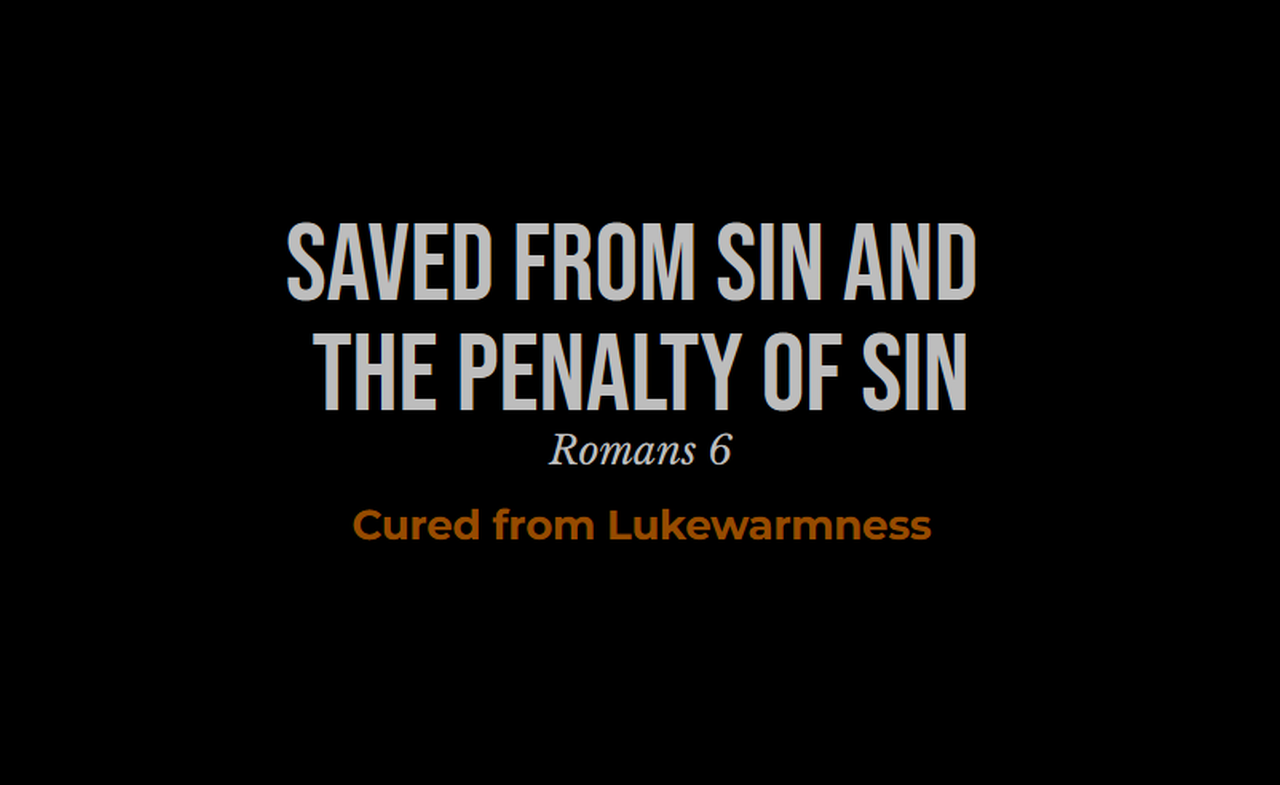
Laodicea: How Jesus Instructs the Backslidden to be Restored
Jesus’ Letter to the Church at Laodicea
“And unto the angel of the church of the Laodiceans write; These things saith the Amen, the faithful and true witness, the beginning of the creation of God;
15 I know thy works, that thou art neither cold nor hot: I would thou wert cold or hot.
16 So then because thou art lukewarm, and neither cold nor hot, I will spue thee out of my mouth.
17 Because thou sayest, I am rich, and increased with goods, and have need of nothing; and knowest not that thou art wretched, and miserable, and poor, and blind, and naked:
18 I counsel thee to buy of me gold tried in the fire, that thou mayest be rich; and white raiment, that thou mayest be clothed, and that the shame of thy nakedness do not appear; and anoint thine eyes with eyesalve, that thou mayest see.
19 As many as I love, I rebuke and chasten: be zealous therefore, and repent.
20 Behold, I stand at the door, and knock: if any man hear my voice, and open the door, I will come in to him, and will sup with him, and he with me.
21 To him that overcometh will I grant to sit with me in my throne, even as I also overcame, and am set down with my Father in his throne.
22 He that hath an ear, let him hear what the Spirit saith unto the churches.
The cross, the crucified life is the cure to the curse of sin—sin dominating our lives.
Romans 6
Inflation is part of the judgment of God upon a wicked people, nation. We see such in Sodom and in Laodicea (Ezekiel 16:49-59; Romans 1; Revelaton 3:14-22).
“It appears that in this scarcity each might be able to obtain a bare subsistence by his daily labor; but a man could not, in such cases, provide for a family.” Adam Clarke
Your money doesn’t go far….. inflation
“Revelation 6 describes the opening of the first six seals, which represent God’s judgment, often called the Four Horsemen of the Apocalypse. The third seal, broken by a “black horse,” is interpreted to show hyper-inflation and famine, where a day’s wage (a denarius) buys only a quart of wheat. The judgment includes a command to preserve the oil and wine, which some interpret as luxury goods, while essential food becomes scarce and expensive.”
“6:5, 6 In obedience to the third living creature, a rider holding a set of scales came forth on a black horse. This represents famine, which often follows war. A voice in the middle of the four living creatures announced that wheat and barley were being sold at prohibitive prices. The scales were used to weigh the rationed grain and were thus a symbol of famine. The expression do not harm the oil and the wine is difficult. Some say that these were the food of the poor. If they were staple items, then they must be protected in order to preserve life. It seems more likely, however, that the luxury items of the rich are contemplated here: historically, even in famine the rich can get some luxuries.” Believer’s Bible Commentary
The only thing needed to go to hell is to not be on fire for Jesus—to be “lukewarm” (Revelation 3:15-16).
Jesus instructed the Laodicean church… to obtain, to “buy of me….
“3:18 The people were counseled to buy from the Lord gold refined in the fire. This may mean divine righteousness, which is bought without money or price (Isa_55:1) but received as a gift through faith in the Lord Jesus. Or it may mean genuine faith, which when tested in the fire, results in praise, honor, and glory at the revelation of Jesus Christ (1Pe_1:7).
Also the people were counseled to buy white garments, that is, practical righteousness in everyday life. And they should anoint their eyes with eye salve, that is, gain true spiritual vision through the enlightenment of the Holy Spirit. This counsel was especially appropriate, since Laodicea was known as a center for banking, textiles, and medicines—especially eye salve.” Believer’s Bible Commentary
“Revelation 3:18
I counsel thee – O fallen and deceived soul, hear Jesus! Thy case is not hopeless. Buy of me.
Gold tried in the fire – Come and receive from me, without money and without price, faith that shall stand in every trial: so gold tried in the fire is here understood. But it may mean pure and undefiled religion, or that grace or Divine influence which produces it, which is more valuable to the soul than the purest gold to the body. They had before imaginary riches; this alone can make them truly rich.
White raiment – Holiness of heart and life.
Anoint thine eyes – Pray for, that ye may receive, the enlightening influences of my Spirit, that ye may be convinced of your true state, and see where your help lies.” Adam Clarke
Warning
“Behold, I come as a thief. Blessed is he that watcheth, and keepeth his garments, lest he walk naked, and they see his shame.” Revelation 16:15
Coming forth as Purified Gold
“But he knoweth the way that I take: when he hath tried me, I shall come forth as gold.” Job 23:10
To “come forth as gold” refers to the finished product, where gold has been purified of all its impurities.
“That the trial of your faith, being much more precious than of gold that perisheth, though it be tried with fire, might be found unto praise and honour and glory at the appearing of Jesus Christ:” 1 Peter 1:7
“The fining pot is for silver, and the furnace for gold: but the LORD trieth the hearts.” Proverbs 17:3
Idolatry is Sin
Putting, having anything or anyone before Christ in our lives is the soul damning sin of idolatry. Such a person has rejected Christ for something, anything else.
One such idol, one such cause today is patriotism for one’s earthly country. See Hebrews 11:14-16.
SO, you are fighting to save America (impossible) and not see souls saved for and by Jesus? Yet you claim to be following Christ who said “I MUST be about my Father’s business”? See Luke 2:49. You are deceived and in need of repentance before it’s too late. You left your “first love” and are in sin, in darkness (Revelation 2:4-5).
“And such as do wickedly against the covenant shall he corrupt by flatteries: but the people that do know their God shall be strong, and do exploits. 33 And they that understand among the people shall instruct many: yet they shall fall by the sword, and by flame, by captivity, and by spoil, many days. 34 Now when they shall fall, they shall be holpen with a little help: but many shall cleave to them with flatteries. 35 And some of them of understanding shall fall, to try them, and to purge, and to make them white, even to the time of the end: because it is yet for a time appointed.” Daniel 11:32-35
“Many shall be purified, and made white, and tried; but the wicked shall do wickedly: and none of the wicked shall understand; but the wise shall understand.” Daniel 12:10
PRAYER: Father in Jesus’ name, please grant to my heart Your gift of repentance and the deep desire to have Your righteousness, to not be deceived by sin, Satan, or counterfeits and false teachers. Please forgive all my sins afresh, here and now by Your precious blood LORD Jesus. Unite my heart to fear Your name. Fill me with Your Holy Ghost and use me LORD. In Jesus’ name, amen.
Support | STORE | Podcasts | Jail/Prison Ministry | Mexico Mission here | All Ministry Updates | Fresh Start with God | Beware of the Many Fake News “bibles” | Lukewarm is Hell Bound! | Becoming Christ’s Disciple | PsychoHeresy | Overcoming Victory in Christ! | The Apostate Modern Church | Christology = the Study of Christ


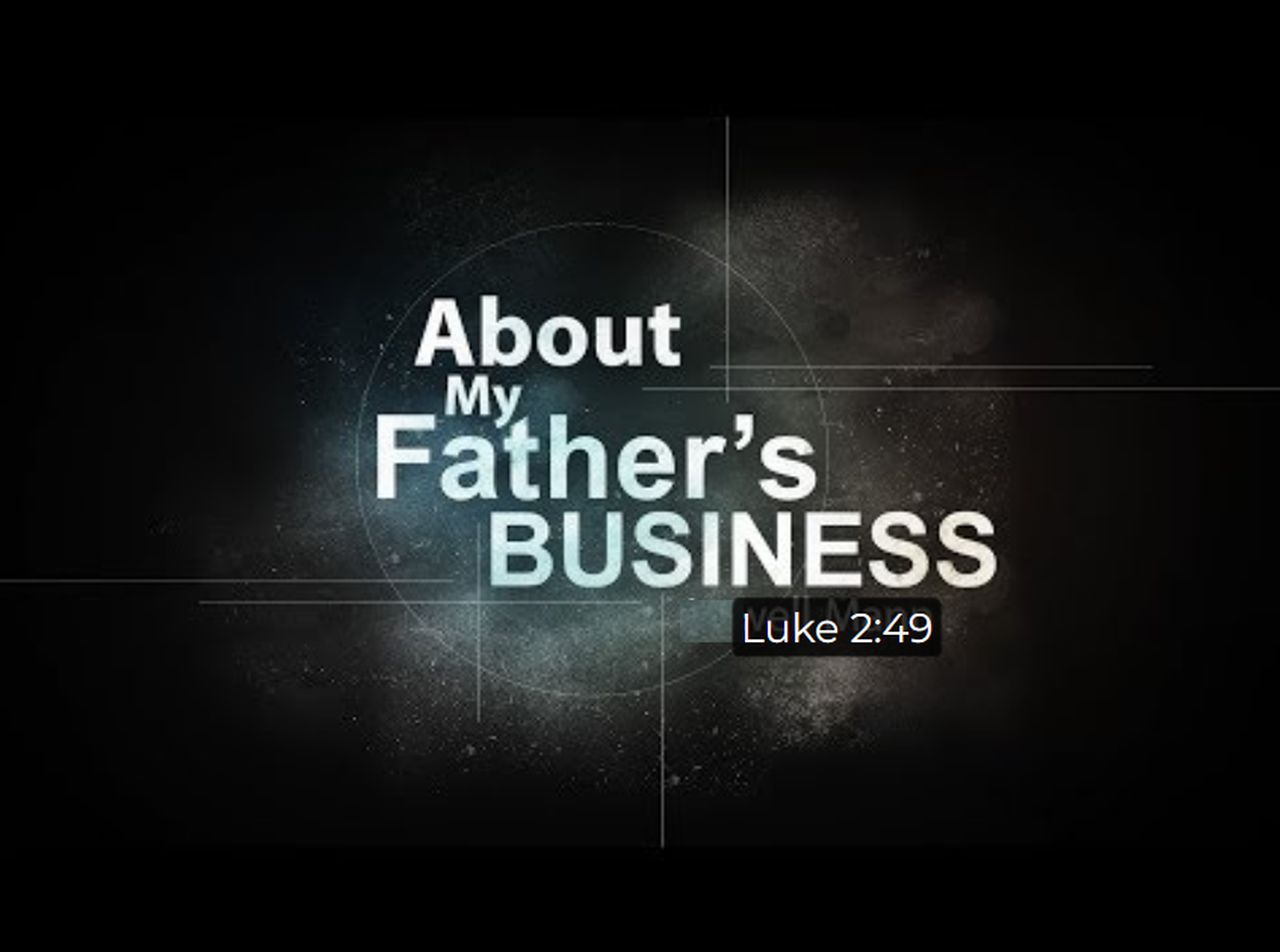

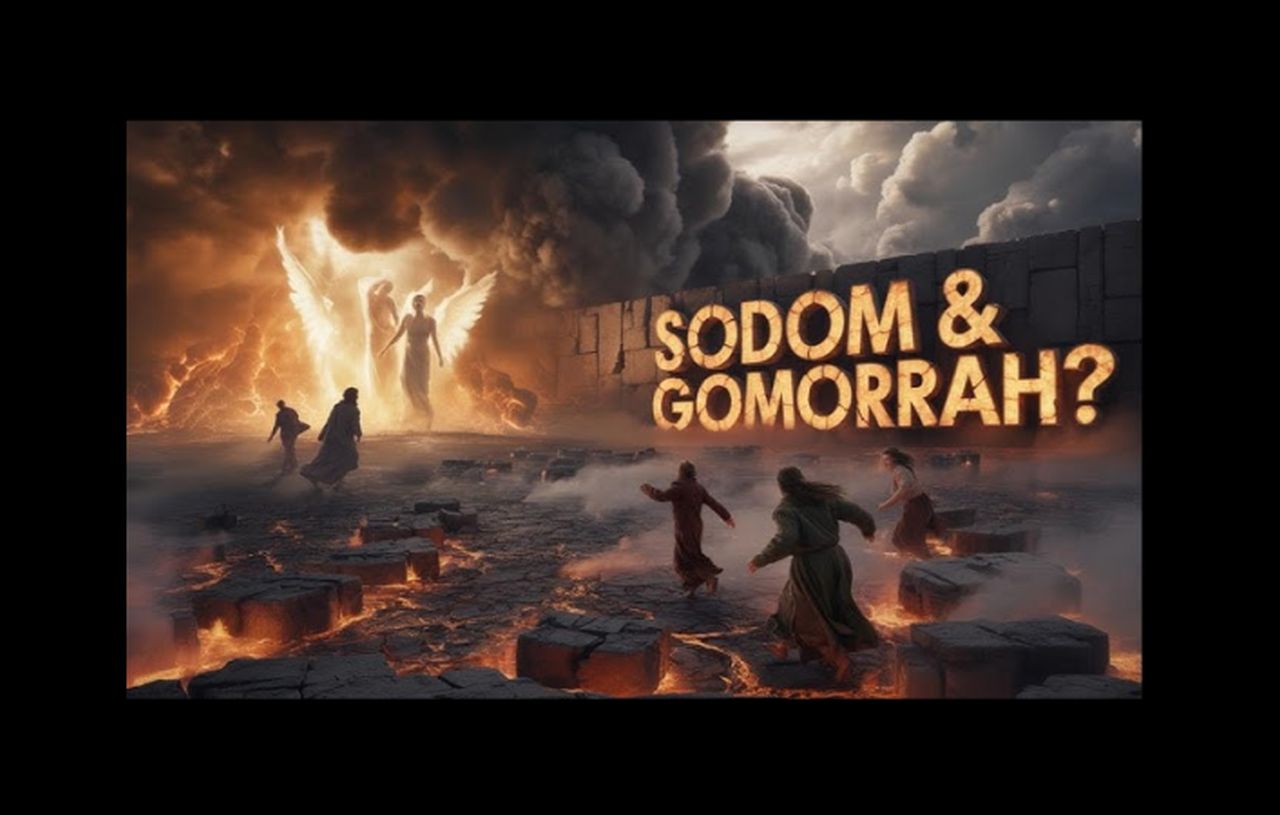

-

 America9 months ago
America9 months agoThe Drugging of America: The Pharmakeia Sorcery Deception [podcast]
-

 Articles2 years ago
Articles2 years agoChildren being Rescued in Tunnels: Happening Now – UPDATE!
-

 Articles8 years ago
Articles8 years agoSelf-Examination in Preparation for the Lord’s Return
-

 Apostasy2 years ago
Apostasy2 years agoSHOCKING List of False Prophets Most Believe are True













